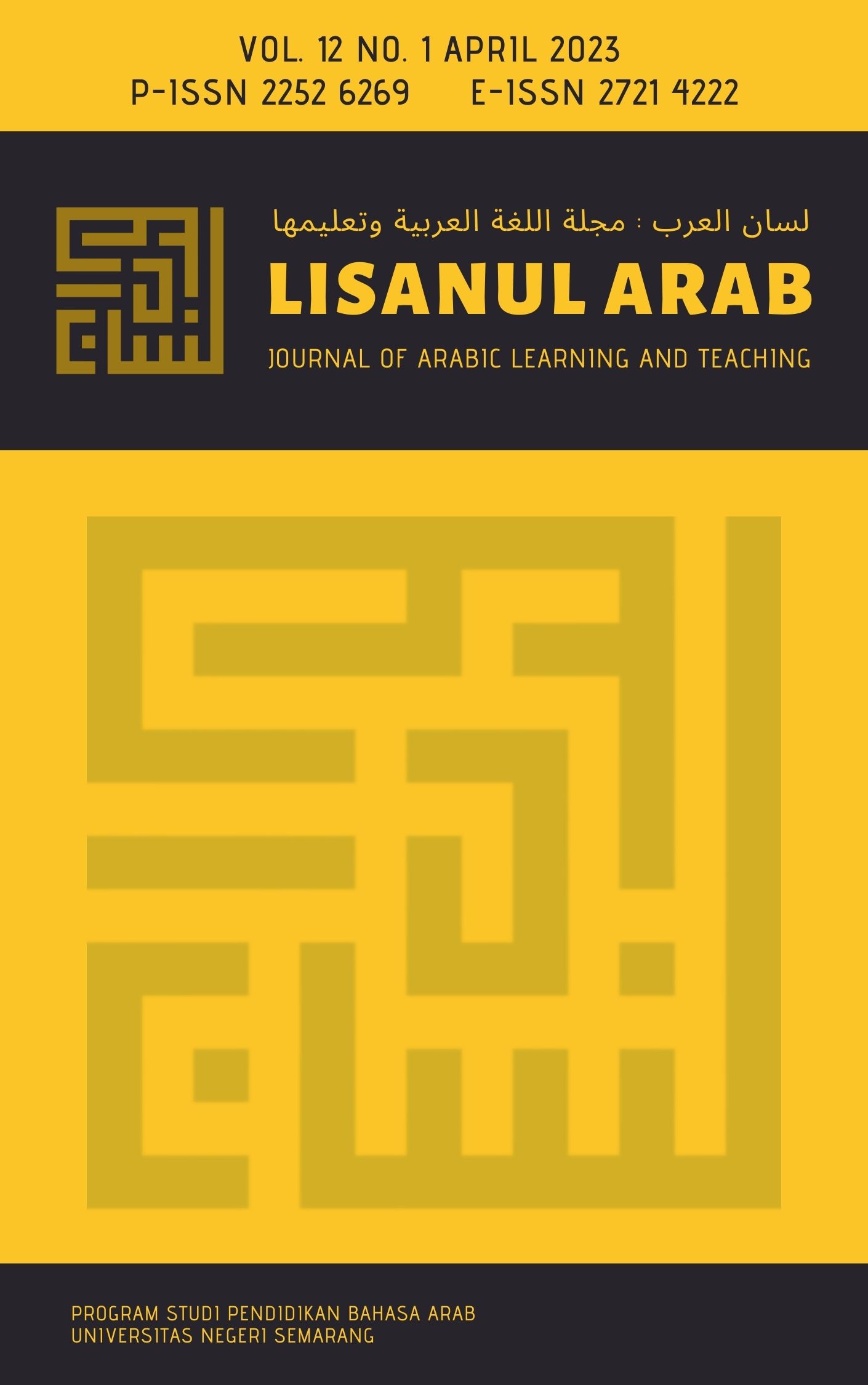FI’L MUDLĀRI’ MABNIYY (VERBA IMPERVEKTUM PERMANENT) DALAM AL-QUR’AN JUZ 1-15 (ANALISIS SINTAKSIS) FI’L MUDLĀRI’ MABNIYY (IMPERVEKTUM PERMANENT VERBS) IN AL-QUR’AN JUZ 1-15 (SYNTAX STUDY) Section Articles
##plugins.themes.academic_pro.article.main##
Abstract
The permanent impervektum verb in Arabic tradition is called fi’l mudlāri’ mabniyy (فعل المضارع المبني), namely the imperfect verb that meets two nūn taukid (tsaqilah or khafifah) direcly and nūn niswah. The purpose of this study is to increase knowledge of permanent impervectum verbs (fi’l mudlāri’ mabniyy) in the Qur’an. This researchis a qualitative research with library research design. The data is in the form of fi’l mudlāri’ mabniyy with the source of the Qur’an juz 1-15. The instruments used are data cards and recapitulation sheets. And technical data analysis using intralingual equivalents. Data collection techniques using the documentation method. The results of this study indicate that in the Qur’an chapters 1-15 found 112 data, based on the type of fi’l mudlāri’ mabniyy (cause mabniyy) there are 101 data because they met nūn taukid tsaqilah, 1 data for meeting nūn taukid khafifah and 10 data for meeting nūn niswah. Based on the mabniyy of fi’l mudlāri’, 102 data with mabniyy fatchah and 10 data with mabniyy sukūn. Based on the i’rab machal, there are 74 data with raf’ (بمحل الرفع), 5 data based on nashab (بمحل النصب), 33 data based on jazm (بمحل الجزم).
##plugins.themes.academic_pro.article.details##
References
Al-Hashimi, A.-S. A. (2018a). Al-Qawa’id Al-Asasiyya Lil-Luga Al-Arabiyya. Dar Al-Kotob Al-Ilmiyah.
Al-Hashimi, A.-S. A. (2018b). Al-Qawa’id Al-Asasiyya Lil-Luga Al-Arabiyya. Dar Al-Kotob Al-Ilmiyah.
An’im, A. (2016). Sang Pangeran Nahwu al-Jurumiyyah. Mu’jizat Group.
Busyro, M. (2017). Shorof Praktis Metode Krapyak. Menara Kudus.
Ghaniy, A. A. A. (2010). An Nahwul Khafiy. Darut Taufiqiyyah.
Hasyim, M. Y. A. (2020). Sintaksis Arab (Kaidah Nahwu). Rizquna.
Ma’arif, S. (2012). Jurus cepat bisa baca kitab gundul. Nuansa Aulia.
Sadjak, M. N. (2013). Tarjamah Matan Al-Jurumiyyah bi al-Lughotain al-jawa wa al-indonesia. Kampoeng Kyai.
Saifuddin, M. (2016). Kajian dan Analisis Alfiyyah. Santri Salaf Press.
Aufar, A., Nawawi, M., & Azmi Amrullah, N. (2019). NAWASHIBUL MUDLORI’ DALAM SURAT AL-KAHFI (ANALISIS SINTAKSIS). Lisanul’ Arab: Journal of Arabic Learning and Teaching, 8(2), 106–110. http://journal.unnes.ac.id/sju/index.php/laa
Sehri, A. (2010). Metode Pengajaran Nahwu Dalam Pengajaran Bahasa Arab. HUNAFA: Jurnal Studia Islamika, 7(1), 47. https://doi.org/10.24239/jsi.v7i1.108.47-60
Zuliyanti, E., Yusuf, M., Hasyim, A., & Elmubarok, Z. (2019). I’RA
